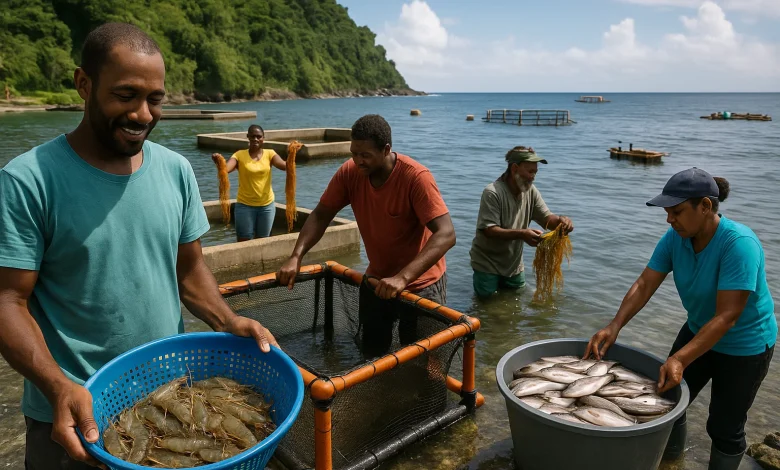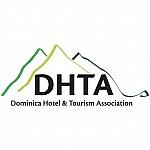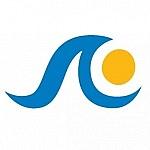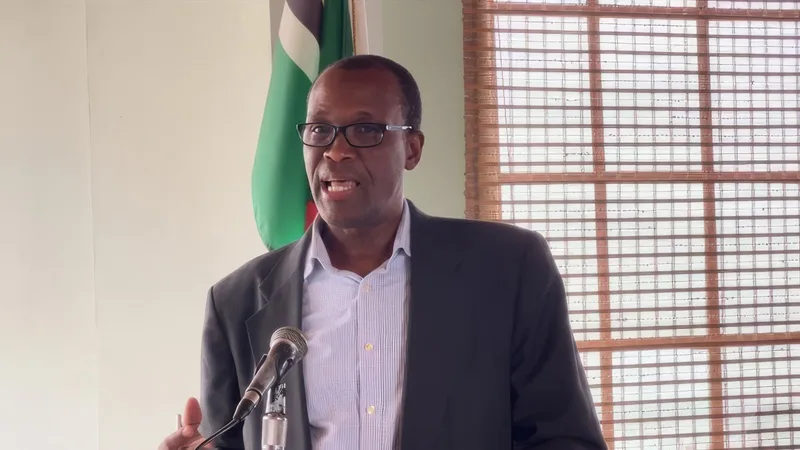Aquaculture Sector in Dominica

Aquaculture in Dominica is small but steadily emerging within the wider fisheries economy overseen by the Fisheries Division of the Ministry of Agriculture, Fisheries, Blue and Green Economy. World Bank figures report ~3 metric tons of aquaculture output in 2022, illustrating a modest base from which government and partners are planning growth.
Physical endowments make expansion plausible: 365 rivers, abundant freshwater catchments, and a 148 km coastline create varied settings for freshwater and coastal culture systems. National blue-economy scoping highlights aquaculture as a diversification opportunity alongside tourism and ports, recommending pilot farms and clearer spatial planning.
Historically, trials have centered on tilapia (Oreochromis spp.) and freshwater prawns (Macrobrachium spp.), with exploratory interest in low-trophic marine species such as seaweeds and sea cucumbers that suit small-island conditions and premium eco-niches.
Legal and Policy Framework That Governs Aquaculture
Dominica regulates capture fisheries and fish farming under the Fisheries Act, Chapter 61:60 (No. 11 of 1987). The Act empowers the Minister to promote fisheries, develop management plans, license local and foreign fishing, designate fish processing establishments, and cooperate regionally, authorities that also frame aquaculture licensing and oversight.
Subordinate legislation demonstrates how marine space is organized for competing uses. For example, the Soufrière/Scotts Head Fishing Priority Area Order (S.R.O. 20 of 1998) was issued under section 20 of the Fisheries Act to manage use in a multi-use bay system, an approach relevant to any future mariculture zoning.
Marine protection instruments intersect with blue-growth planning. The National Parks and Protected Areas Act (1975) encourages marine sections of protected areas, including management of Cabrits National Park Marine Section; the park’s planning documents brief note protective rules for coral, seagrass and mangroves, habitats that influence siting of seaweed lines or bivalve trials.
At the regional scale, Dominica participates in CARICOM/CRFM policy cooperation, which now explicitly advances sustainable aquaculture through the CRFM Environmental and Social Safeguards Policy (2025) and the Caribbean Community Common Fisheries Policy, useful templates for local environmental screening and social licensing for farms.
Species, Systems and Likely Sites for Expansion
- Freshwater finfish and crustaceans: Farm-pond or tank systems for tilapia and Macrobrachium remain the most practical near-term options, benefiting from dependable river flows and lower feed-conversion risks than carnivorous species. FAO/World Bank data confirm a small baseline that can scale with farmer training and feed solutions.
- Low-trophic mariculture: The Blue Economy study recommends exploring seaweed rope culture (e.g., Eucheuma/Gracilaria types) and other low-trophic species that require minimal feed inputs and can serve wellness, culinary, and cosmetic markets. Careful siting is essential to avoid conflicts with coral, seagrass, and navigation.
- Integrated systems on land: Aquaponics (fish + vegetables) offers water-efficient food production for hotels and urban markets, reducing import dependence while aligning with climate resilience priorities flagged in national blue-economy planning.
Locationally, inland valleys with established irrigation, and leeward coastal pockets with calmer seas, are the most likely near-term zones. Marine pilots must consider protected areas near the Cabrits National Park and the Soufrière Scotts Head Marine Reserve, where conservation and small-scale fisheries have priority under existing orders.
Projects, Incentives and Development Finance in Motion
Public-investment and donor programs increasingly mention aquaculture within broader agri-food resilience efforts. The Emergency Agricultural Livelihoods and Climate Resilience Project (DEALCRP) (ESMF updated March 2024) provides a framework for climate-smart recovery in agriculture; while not aquaculture-exclusive, its environmental and social safeguards and procurement systems create a channel for fish-farming inputs, water infrastructure, and training.
On the investment side, the Invest Dominica Authority promotes aquaculture within “Organic Agribusiness and Aquaculture,” offering duty-free importation, VAT relief on approved equipment, and tailored fiscal incentives. IDA describes a flexible, non-discriminatory application process across sizes of enterprise, useful for cooperatives and SMEs considering ponds, tanks, or seaweed lines.
UNDP’s Blue Economy policy notes and scoping studies further encourage pilot farms, marine spatial planning, and capacity building in business planning and biosecurity, anchoring aquaculture in a wider maritime strategy rather than isolated projects.
Data, Scale and Market Outlook with Available Indicators
Available statistics put present-day aquaculture output at ~3 metric tons (2022), indicating a micro-sector compared with capture fisheries. While older regional snapshots reference single-digit tonnages and limited hectares under ponds, the consistent theme is underutilized freshwater and coastal potential rather than technical impossibility. Official statistics portals (World Bank/Trading Economics) corroborate the very low base, reinforcing the case for demonstration farms and learning networks before scale-up.
Demand is anchored locally in hotels, restaurants, and retail, especially along the west coast tourism corridor, where “fresh, traceable, local” branding can command a premium. The Blue Economy review suggests differentiating through niche, eco-certified products rather than commodity volumes, pairing with agri-processing for dried seaweed gels, tilapia fillets, or ready-to-cook portions.
Constraints and Risks That Must Be Managed
- Technical capacity and R&D gaps: The island lacks a dedicated aquaculture research station and consistent extension services for water quality, disease control, and hatchery management, barriers flagged in blue-economy diagnostics.
- Input costs and supply chains: Feeds, liners, pumps, and aeration gear are expensive to import; small farms struggle to reach the scale needed for lower unit costs.
- Licensing and marine space competition: Clear, aquaculture-specific licensing and environmental screening are still evolving; mariculture must coexist with reef conservation, whale-watching, and small-scale fishing zones established under orders like Soufrière/Scotts Head.
- Climate and disaster risks: Storms, floods, and turbidity spikes threaten ponds and nearshore ropes; climate-resilient designs and insurance are essential. DEALCRP safeguards can help mainstream resilience features in project design.
- Market access and standards: HACCP, biosecurity, and traceability requirements can be challenging for micro-operators without collective processing and cold-chain solutions.
Practical Growth Pathways Over the Next Five Years
- Launch 2–3 freshwater pilot clusters around existing irrigation schemes, pairing tilapia with vegetable aquaponics for hotels and institutional buyers; use shared feed purchases and technician rotations to manage costs.
- Test two marine low-trophic pilots outside sensitive reefs: one seaweed rope farm for wellness/cosmetics value chains; one bivalve or sea cucumber trial subject to environmental baselines and EIA triggers.
- Adopt a concise Aquaculture Regulation under the Fisheries Act to set licensing classes (ponds, RAS, mariculture), water-use rules, site buffers, reporting, and audit schedules, drawing on CRFM safeguard templates.
- Strengthen extension and training through a small Aquaculture Service Unit within the Fisheries Division, linked to regional partners and DEALCRP procurement lines for portable test kits, fry supply, and biosecure holding tanks.
- Create a micro-processing and cold-chain node on the leeward coast to aggregate harvests, meet HACCP, and produce value-added lines; link to Invest Dominica incentives for equipment and tax relief.
- Integrate marine farming in spatial plans for Portsmouth, Soufrière, Scotts Head coastal communities, with community co-management and seasonality rules to protect reef tourism and artisanal fishing.
What to Watch: Policy, Projects and Measurable Milestones
- Statutory update: Any Aquaculture-specific regulations or guidance issued under Chapter 61:60 (licensing forms, environmental screens, audit templates).
- Pilot outputs: Annual tonnage and farm-gate prices from freshwater cluster pilots, tracked in ministry reports and national accounts.
- Investment uptake: Number of firms or cooperatives approved under Invest Dominica incentives for aquaculture equipment and processing.
- Blue-economy integration: Progress on marine spatial planning actions and site guidelines recommended in the scoping study and UNDP policy notes.
- Environmental performance: Water-quality and benthic monitoring near any mariculture ropes, coordinated with protected-area management plans for Cabrits and neighboring bays.




